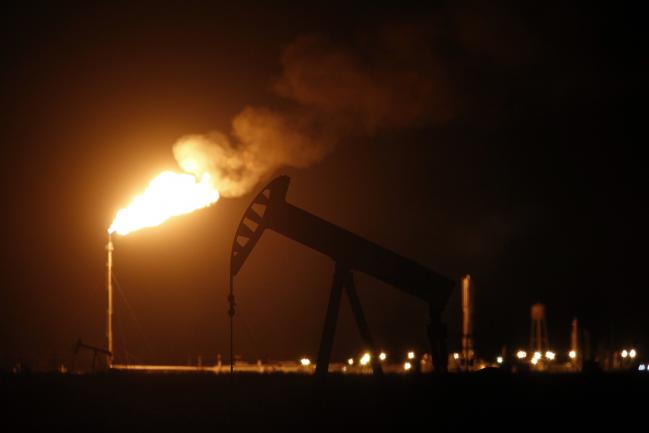(Bloomberg) -- Oil’s recent three-year highs are looking increasingly elusive as the week ends, with mounting fears that current prices will spark too much production, all over again.
Futures in New York slid 0.9 percent on Friday to the lowest level in more than a week and posted the first weekly loss since mid-December. The International Energy Agency on Friday said it sees “explosive” growth in U.S. oil output in 2018. A day earlier, the Energy Information Administration showed the biggest gain in U.S. crude production since October.
“The higher the price is, the more production we are going to get out of the U.S., which threatens the price,” James Williams, president of London, Arkansas-based energy researcher WTRG Economics, said by telephone. “We are in that threatening cycle right now.”
The enthusiasm that put the crude market in the groove for another year of rising prices is giving way to some caution. With technical indicators signaling oil is overbought, hedge funds cut their bullish bets on Brent crude from a record-high, according to ICE Futures Europe data released on Friday.
The Organization of Petroleum Exporting Countries, which will meet in Oman this weekend to review its strategy, is sticking to its production curbs. But some analysts expect the output-cut agreement will end earlier than planned. Plus, the compliance rate for the 10 non-OPEC nations participating in the deal plummeted to 78 percent in December, the lowest level since July, according to Bloomberg calculations from preliminary IEA data.
The "probability is growing" that the accord may conclude before the end of the year, said Harry Tchilinguirian, BNP Paribas (PA:BNPP) SA’s head of commodity strategy. Discussions around an early exit are likely to emerge at the OPEC’s meeting in June, he said.
See also: Conoco CEO fears ‘overcorrection’ as oil rally tempts drillers
West Texas Intermediate for February delivery dropped 58 cents to settle at $63.37 a barrel on the New York Mercantile Exchange. Total volume traded was about 11 percent below the 100-day average. Prices are down 1.5 percent this week.
Brent for March settlement slipped 70 cents to end the session at $68.61 a barrel on the London-based ICE Futures Europe exchange. Prices fell 1.8 percent this week. The global benchmark crude traded at a premium of $5.30 to March WTI.
The IEA expects non-OPEC supply to expand by 1.7 million this year, the biggest jump since the peak of the shale boom.
“The big 2018 supply story is unfolding fast in the Americas,” the IEA said in its monthly report. “Explosive growth in the U.S. and substantial gains in Canada and Brazil will far outweigh potentially steep declines in Venezuela and Mexico.”
Earlier in the week, an EIA report showed that while U.S. crude inventories tumbled for a ninth straight week, production rose by 258,000 barrels a day.
The decline in crude inventories “was a definite positive, but at the same time, there was a little bit of concern in the market that has really been brought out too by the IEA, with just continual production as we get closer to the $65 range,” Mark Watkins, a Park City, Utah-based regional investment manager at U.S. Bank Wealth Management, which oversees $142 billion in assets, said by telephone.
Oil-market news:
- The U.S. oil rig count fell by 5 rigs to 747, according to Baker Hughes data Friday.
- Oilfield-services companies are starting to see the gloom lifting after the worst crude collapse in a generation, according to Schlumberger Ltd.
